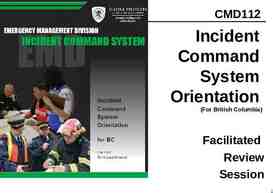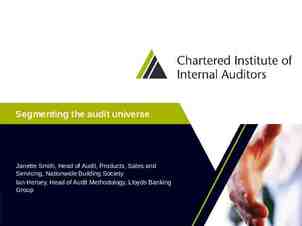Family Medical Leave And Incident Reporting/Workers Compensation What
26 Slides1.22 MB

Family Medical Leave And Incident Reporting/Workers Compensation What Supervisors Need To Know Department of Military Human Resources Benefits

Family Medical Leave Act (FMLA) Arkansas OPM Policy https://www.transform.ar.gov/wp-content/uploa ds/2021/05/51-Family-and-Medical-Leave-ActFMLA-5.13.2021.pdf

FMLA Eligibility Employees must have worked a minimum of 1,250 over the previous 12 months before the leave is to begin. Employee must have worked for State of Arkansas for 12 months (Doesn’t have to be continuous)

FMLA Eligible Employees FMLA provides eligible employees up to 12 workweeks (480 hours) of unpaid leave a year and requires group health benefits to be maintained during the leave as if employees continued to work instead of taking leave. Employees are also entitled to return to their same or an equivalent job at the end of their FMLA leave. FMLA also provides certain military family leave entitlements. Eligible employees may take FMLA leave for specified reasons related to certain military deployments of their family members. Additionally, they may take up to 26 weeks of FMLA leave in a single 12-month period to care for a covered servicemember with a serious injury or illness.

FMLA Military Provisions & Prohibited Acts https://www.dol.gov/sites/dolgov/files/WHD/leg acy/files/whdfs28m.pdf https://www.dol.gov/sites/dolgov/files/W HD/legacy/files/whdfs77b.pdf

FMLA Qualifying Conditions Birth of a son or daughter, and to bond with the newborn child; For the placement with the employee of a child for adoption or foster care, and to bond with that child; To care for an immediate family member (spouse, child, or parent – but not a parent “in-law”) with a serious health condition; To take medical leave when the employee is unable to work because of a serious health condition; or For qualifying exigencies arising out of the fact that the employee’s spouse, son, daughter, or parent is on covered active duty or call to covered active-duty status as a member of the National Guard, Reserves, or Regular Armed Forces. The FMLA also allows eligible employees to take up to 26 workweeks of unpaid, job-protected leave in a “single 12-month period” to care for a covered servicemember with a serious injury or illness.

FMLA Birth and Bonding of a Child Restrictions on when an employee can take leave for the birth or adoption of a child Leave to bond with a newborn child or for a newly placed adopted or foster child must conclude within 12 months after the birth or placement. The use of intermittent FMLA leave for these purposes is subject to the employer’s approval. If the newly born or newly placed child has a serious health condition, the employee has the right to take FMLA leave to care for the child intermittently, if medically necessary and such leave is not subject to the 12-month limitation. Parents can take leave for a newborn Mothers and fathers have the same right to take FMLA leave to bond with a newborn child. A mother can also take FMLA leave for prenatal care, incapacity related to pregnancy, and for her own serious health condition following the birth of a child. A father can also use FMLA leave to care for his spouse who is incapacitated due to pregnancy or child birth.

FMLA Domestic Violence and Organ Donor FMLA leave can be used for reasons related to domestic violence FMLA leave may be available to address certain health-related issues resulting from domestic violence. An eligible employee may take FMLA leave because of his or her own serious health condition or to care for a qualifying family member with a serious health condition that resulted from domestic violence. For example, an eligible employee may be able to take FMLA leave if he or she is hospitalized overnight or is receiving certain treatment for post-traumatic stress disorder that resulted from domestic violence. FMLA leave when employee donate an organ to a non-relative An organ donation can qualify as a serious health condition under the FMLA when it involves either inpatient care or continuing treatment as defined in the regulations. Organ-donation surgery commonly requires overnight hospitalization and that alone suffices for the surgery and the post-surgery recovery to qualify as a serious health condition.

FMLA Leave Types 1. Continuous leave - Employee is absent for more than 3 consecutive business days without interruption. 2. Intermittent leave - Employee is absent during a block (irregular, occasionally, sporadic, unpredictable) of time. For example: Employee is absent 3 days, back at work for a week and then absent again. 3. Reduced Scheduled leave - Employee may need to have a reduced work schedule to attend appointments.

FMLA Supervisors Responsibilities 1. Understand and comply with 2. 3. 4. FMLA policies and federal law. Recognize when an employee may need FMLA. Provide employee with the FMLA request form (employees do not need to mention “FMLA”). Respond to employees FMLA leave request without asking or getting involved in their medical issues. Supervisors should refer employees to DOM HR- Benefits for FMLA information.

FMLA Return-To-Work 1. If leave is due to the employee’s own serious health condition 2. 3. and is on a continuous block of time status, the employee may provide a return-to-work (RTW) release document. DOM reserves the right to request a fitness for duty exam, prior to employee return. A RTW is not required for: - Intermittent leave - Pregnancy, prenatal care or for the birth or placement of a child, adoption or foster care* - Leave to care for a family member or covered service member or military exigency.* * For these types of leave, employees should provide their return-to-work date prior to their actual return.

FMLA Light Duty and Accommodations Light Duty - If an employee submits a light duty restriction from their physician to their supervisor and request an accommodation, the supervisor must contact HR to determine if there can be an accommodation for the employee. Light duty is not covered under FMLA. Accommodations - American Disability Act (ADA) prohibits discrimination against individuals with disabilities. Examples of ADA accommodations are: wheelchair accessibilities handicap restrooms parking spaces hearing or visual equipment When an employee request reasonable accommodations regarding their disability, supervisors will need to contact HR to determine if there can be an accommodation for the employee.

Occupational Safety and Health Administration (OSHA) https://www.osha.gov/sites/default/files/publ ications/osha3165.pdf

OSHA Employer Responsibilities Employers have the responsibility to provide a safe workplace. Employers MUST provide their employees with a workplace that does not have serious hazards and follow all relevant OSHA safety and health standards. Employers must find and correct safety and health problems. OSHA further requires employers to try to eliminate or reduce hazards first by making changes in working conditions rather than just relying on masks, gloves, ear plugs or other types of personal protective equipment (PPE). Inform employees about hazards through training, labels, alarms, color-coded systems, chemical information sheets and other methods. Keep accurate records of work-related injuries and illnesses.

Incident Reporting Examples LOSS OF CONSCIOUSNESS DAMAGE TO SKIN FALLS BROKEN GLASS/WINDOWS VEHICLE ACCIDENTS INJURIES TO BODY LOSS/THEFT OF DEPARTMENT PROPERTY WATER OR GAS LEAKS POISION/EXPOSED TO HAZARDOUS MATERIAL MISSING SAFETY EQUIPMENT EXPOSED WIRES INCAPACITATION/DISLOCATION OF LIMBS

OSHA Violations & Penalties 1. Serious - When a business owner or manager knows there is a hazard that can result in injury or death and does not resolve it, OSHA considers this a serious violation. Fines are based on the seriousness of the violation and can reach up to 13,653 for each one. 2. Other Than Serious - A violation that does not result in injury or death but does compromise an employee’s health or safety is considered otherthan-serious-threat by OSHA. The maximum penalty for this type of violation is the same as a serious one. However, the Occupational Safety and Health Agency has the choice of issuing a citation or reducing the penalty amount by 95%. 3. Willful or Repeated - When a violation is repeated within three years, companies will face stiffer penalties up to 136,532. Willful violations are the most serious. The violation occurs when the employer knows there’s a risk to employees and does nothing to resolve it.

OSHA Prevention - Supervisors 1. Ensure that workplace and equipment are safe, well maintained, and in compliance with regulations. 2. Ensure that workplace safety and health practices and procedures are clearly communicated and understood by employees through training briefings. 3. Ensure that periodic, scheduled workplace inspections are conducted and that identified health and safety deficiencies are corrected in a timely manner. 4. Ensure that workplace incidents (injuries, exposures, or illnesses) are reported, investigated, and corrected promptly.

Incident Reporting DOM Policy 48-2020 https://military.arkansas.gov/wp-content/upload s/2020/10/Policies DOTM-48-2020.pdf

Incident Reporting Responsibility ALL ACCIDENTS /INCIDENTS RESULTING IN: - PERSONAL INJURY - DAMAGE TO DEPARTMENT OF MILITARY PROPERTY - POTENTIALLLY UNSAFE WORKING CONDITIONS WHO IS RESPONSIBLE TO REPORT: EMPLOYEES SUPERVISORS MANAGEMENT

Incident Reporting Guidelines Employee shall notify supervisor or management. Employee/Supervisor will call the Company Nurse hotline to report the injury/illness. THIS INTIATES THE WORKERS COMPENSATON CLAIM 1-855-339-1893 Supervisor will complete an incident report and submit it to the DOM HR department. *AN EMPLOYEE MAY NOT IMMEDIATLEY KNOW HE/SHE IS INJURED/ILL, Supervisors must complete the incident form once they become aware of the illness/injury.

Incident Reporting Procedures Step 1: ASAP - Seek medical attention. Step 2: ASAP – Call Company Nurse (1-855-339-1893) to report injury. In the event the employee is unable to call, the supervisor must call. Step 3: Prescriptions Assistance – Provide employee the number to OPTUM (1-866-599-5426) for assistance with workrelated injury prescriptions.

Incident Reporting Prescription Assistance Info

Incident Reporting Workers Comp – Complete AR-N Company Nurse will generate an AR-N form and email to DOM benefits representative. Supervisor or the employee will receive an email of the AR-N form for signature from the benefits representative. This form must be signed and emailed back to the benefits representative.

Incident Reporting Workers Comp – Employee Instructions It is the Employees responsibility to provide work notices to DOM. If a supervisor receives any doctors notes from employees, the Supervisor must submit the statements to DOM benefits representative.

Incident Reporting Workers Comp – Light Duty Restrictions Workers Comp notifies the benefits representative for lightduty restrictions. The benefits representative will send the supervisor an email to see if the supervisor can accommodate the light-duty restriction or not. This information will be reported to Workers Comp. An employee may submit a light-duty restriction from their physician to their supervisor and request an accommodation, the supervisor must contact HR to determine if there can be an accommodation for the employee.

Incident Reporting Other Important Contacts WORK RELATED VEHICLE ACCIDENTS ARE REPORTED TO JERRY COWLES, MAINTENANCE COORDINATOR PHONE: 501-212-5123 EMAIL: [email protected] WORK RELATED INJURY/ILLNESS ARE REPORTED TO Da’Vetta Flowers, Personnel Manager PHONE: 501-212-5127 EMAIL: davetta.flowers@arkansas. gov






